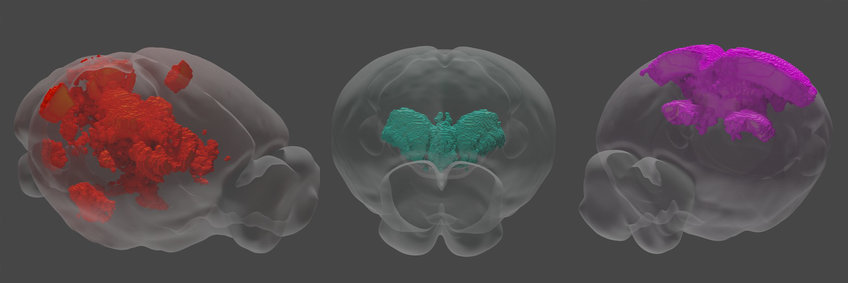
Brain-Wide Circuits for Behavior
PLEASE NOTE: Emilie Macé and her group will move to Göttingen during 2023, where she holds the professorship “Dynamics of excitable cell networks” at the Department of Ophthalmology, University Medical Center Göttingen. She is also affiliated with the DFG-funded Cluster of Excellence ‘Multiscale Bioimaging’ (MBExC).
For more information: Emilie Macé takes up new professorship for Dynamics of Excitable Networks
How distributed brain networks cooperate to produce behavior is a fundamental question in neuroscience. Advances in neurotechnology, primarily applied to mice, have revealed insights into the neuronal computations that underlie behavior at the microcircuit level. However, these circuit studies mostly focus on only one or two candidate brain regions at a time: a whole-brain view is missing due to a lack of methods to record whole-brain activity during mouse behavior.
Using functional ultrasound imaging, a method for recording whole-brain activity in behaving mice at high spatial resolution (100 µm), the goal of the lab is to study how mice switch between behaviors in a natural environment, and identify the whole-brain networks underlying these switches.
In a natural context, the brain deals with a large number of possible actions and must continuously integrate both internal states and external stimuli when selecting the next behavior. How this basic function is implemented in the whole-brain remains elusive, but functional ultrasound imaging combined with the circuit tools available in mice offer an opportunity to address it. Moreover, the lab investigates how the whole-brain networks involved in behavioral switching are altered in psychiatric disorders, focusing on depression, in which there is impairment of the initiation of innate behaviors, and obsessive-compulsive disorders which lead to excessive engagement in specific behaviors.